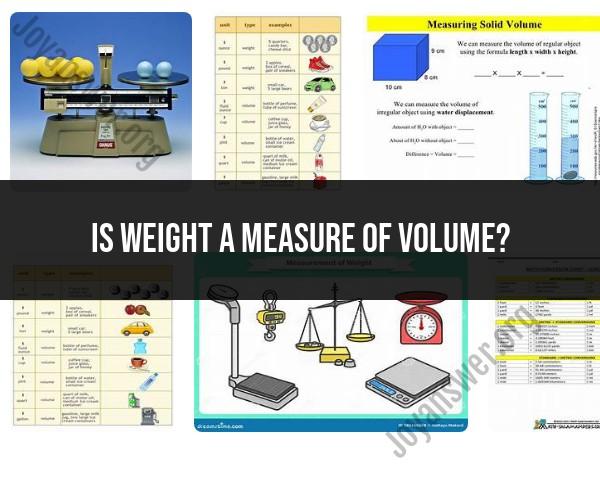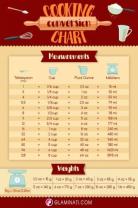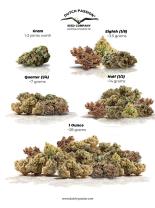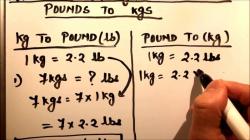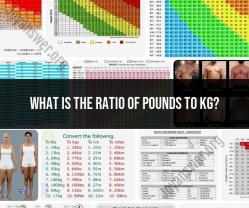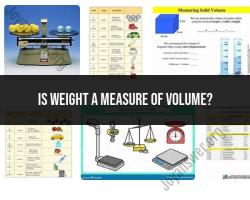Is weight a measure of volume?
No, weight and volume are not the same and do not measure the same things. They are distinct physical measurements with different units and meanings:
Weight:
- Weight is a measure of the force of gravity acting on an object. It is typically expressed in units such as pounds (lb) or kilograms (kg). For example, a 5-pound weight is the force with which a 5-pound mass is pulled by gravity.
Volume:
- Volume, on the other hand, is a measure of the amount of space occupied by an object or substance in three dimensions. It is typically expressed in units like cubic inches (in³), cubic centimeters (cm³), liters (L), or gallons (gal). For instance, a 1-liter container can hold a volume of 1 liter of liquid.
In summary, weight measures the force of gravity acting on an object, while volume measures the space that an object or substance occupies. They are related but distinct concepts in physics and have different units of measurement.
Weight and Volume: Understanding the Difference
Weight and volume are two different physical properties of matter. Weight is a measure of the force of gravity acting on an object, while volume is a measure of the amount of space that an object occupies.
Weight is typically measured in units such as grams, kilograms, or pounds. Volume is typically measured in units such as cubic centimeters, cubic meters, or gallons.
Definitions and Units of Weight and Volume
Weight
Weight is defined as the force of gravity acting on an object. It is a measure of how heavy an object is.
The most common units of weight are:
- Grams (g)
- Kilograms (kg)
- Pounds (lb)
Volume
Volume is defined as the amount of space that an object occupies. It is a measure of how big an object is.
The most common units of volume are:
- Cubic centimeters (cm³)
- Cubic meters (m³)
- Gallons (gal)
Measuring Techniques and Instruments for Weight and Volume
Weight
Weight is typically measured using a scale. There are many different types of scales, but the most common type is a beam scale.
To measure the weight of an object on a beam scale, you first place the object on the scale pan. Then, you adjust the weights on the beam until the scale is balanced. The weight of the object is equal to the sum of the weights on the beam.
Volume
Volume is typically measured using a graduated cylinder or a measuring cup. To measure the volume of a liquid, you simply pour the liquid into the graduated cylinder or measuring cup and read the volume scale.
To measure the volume of a solid, you can use a variety of methods, depending on the shape of the solid. For example, to measure the volume of a cube, you would multiply the length of the cube by the width of the cube by the height of the cube.
Converting Between Weight and Volume in Different Contexts
It is important to note that weight and volume are not directly related. This means that there is no simple formula for converting between weight and volume.
However, there are some general relationships between weight and volume that can be used to make approximate conversions. For example, water has a density of 1 gram per cubic centimeter. This means that 1 cubic centimeter of water weighs 1 gram.
Therefore, to convert from the volume of water to its weight, you can simply multiply the volume by 1 gram per cubic centimeter. To convert from the weight of water to its volume, you can simply divide the weight by 1 gram per cubic centimeter.
It is important to note that these relationships are only approximate. The actual density of a substance may vary depending on its temperature and pressure.
Practical Applications of Weight and Volume Measurements
Weight and volume measurements are used in a wide variety of contexts. For example, weight measurements are used in cooking, baking, and other food preparation tasks. Volume measurements are used in measuring cups and spoons, graduated cylinders, and other laboratory equipment.
Weight and volume measurements are also used in many industrial and commercial applications. For example, weight measurements are used to measure the amount of material in a shipment of goods. Volume measurements are used to measure the amount of fuel in a vehicle's tank or the amount of liquid in a container.
Overall, weight and volume are two important physical properties of matter that have a wide range of practical applications.
